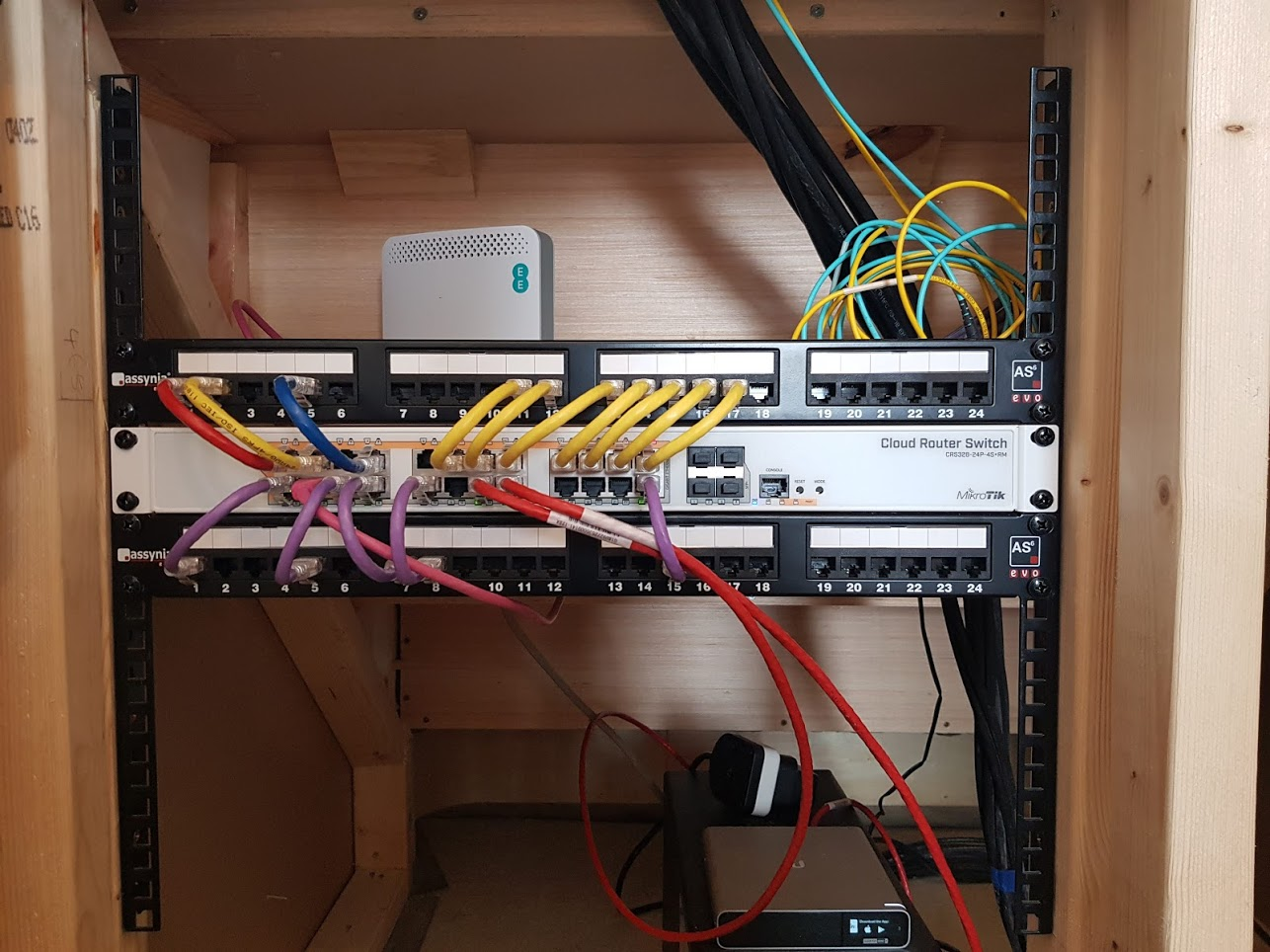I'm going to weigh in on the power bar/rack positioning subjects.
Rack mount power bars are a "nice to have" if you have space. They take up 1u minimum in theory but when once installed it's closer to 3u. Don't install one in the very bottom or very top of the cab because you'll find:
- With standard UK moulded 13a plugs, you won't be able to plug them in because of the strain relief boot at the bottom
- Many mains adapters are bulky and stick up either above or below the bar
If you want to install one at the back and are using a wall-mount cab, make sure that cab has removable sides otherwise if you come close to filling the front rack, you'll realise all your devices might as well be hardwired to the mains now as the bar will be inaccessible.
If wall-mounted, I'd just mount an ordinary power strip just below the cab (they almost all have 2 holes at the back for this) and use the knock-out at the bottom of almost every wall-mounted cab to run the mains cables through. Wall-mount your NTE next to it. Put a UPS on the floor beneath it if/when you have one.
Of course if you have a cab with a removable back and you're going to rest it on a piece of ply in your loft, this is less of an issue.
People leaving gaps between units are a pet peeve of mine unless it's a gap of a whole u and they haven't used that gap to run cables through! When you come to install some kit and that's the last u available, you'll need to reroute that cable(s) anyway. There are almost always gaps to run link cables through to the sides of the racks, if your cable isn't long enough then get a longer one, they are pennies these days.
When you leave a gap of one hole (not a whole u), you're breaking the spacing of the holes which makes it difficult to install kit. Look carefully at the spacing between the holes. Leaving a gap of one hole makes the spacing for the next ones out-of-spec and you'll end up stripping threads and skinning your knuckles and swearing even if you do eventually manage to jam your shiny new switch in there.

Another argument I've heard from people who do this (*spits*) is "airflow". But the vents on rack-mount units are at the sides or the back for a reason, they're never at the top or bottom! Maybe there is a valid argument for preventing heat build-up if you have massive routers or core switches snuggled up together but in a home/SOHO environment you don't need to think about that. If you have two switches, put a panel between them if you honestly think heat dissipation is going to be an issue. Or plan for a bigger cab and leave a whole u!
On patching; in a small network cab I never use 1m patch leads and management bars these days, just get 0.25m leads and jump straight from switch to patch panel. It ends up looking neat, takes up less space and is very easy to work with (except if you have to replace some kit you've patched over, careful rack planning can avoid this scenario, otherwise it's only a home network so 10 minutes of downtime shouldn't kill anyone).
Apologies for the long post and sorry if I offended those who leave spaces between kit to run cables through (but you are going to hell one day).






